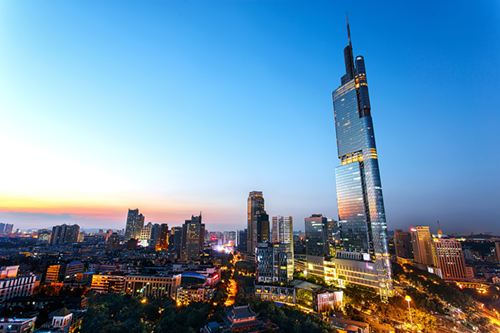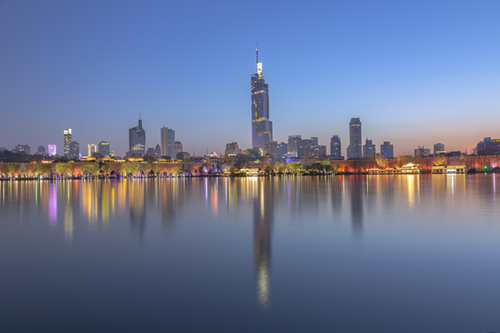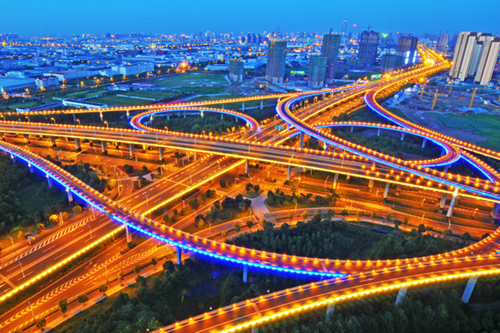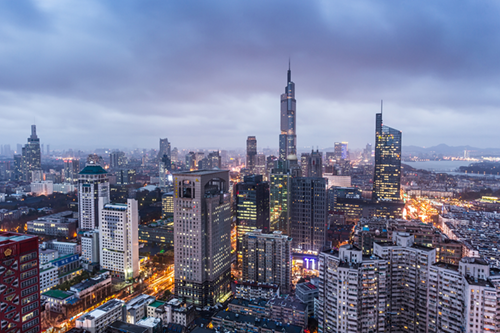Business location of Jiangsu
Location and people
Jiangsu province is located in the Yangtze delta area in the coastal region of eastern China. It lies in the lower courses of the Yangtze and Huai rivers. East of Jiangsu is the Yellow Sea, and the coastline of the province amounts to 954 km. To the south-east, Jiangsu borders the city of Shanghai.
The province has a good infrastructure and a highly developed transport and communication network. The concentration of inland river traffic and motorways is the highest in China, making Jiangsu one of the most dynamic Chinese provinces with the biggest development potential. Jiangsu is the transportation hub in eastern China and has a complete and modern structure for transporting passengers and goods.


Jiangsu occupies an area of 107,200 km2 and has a population of 80 million. The province has been developing at a rapid pace ever since China implemented reforms and opened up to foreign trade.
With just 1% of the land area and 5.8% of the population, Jiangsu nonetheless accounts for 10% of China’s total economy. The GDP for Jiangsu Province exceeded EUR 1.33 trillion in 2020 and has long been ranked second in China, as well as having the highest GDP per capita.
Industry with a regional focus
The manufacturing industry in Jiangsu is known for its high standards and considerable capacity. The processing trade has occupied the top position in the whole of China for a number of years. Jiangsu is currently trying to develop itself as a location for advanced manufacturing industries, with the ability and capacity to compete internationally by accelerating the restructuring of traditional industries. The production facilities are being modernised in line with the latest technical developments and integrated into the Internet in order to promote the far-reaching consolidation of the production sector and the Internet.
Market and trade
Jiangsu is a strong trading province and is taking a lead in China in terms of its trade volume. There is a full range of goods on the thriving market, while the demand is equally strong. In 2020, the province generated a total turnover of EUR 479 billion for consumer goods in the retail sector. With Nanjing as the province’s capital, there are 46 cities within a radius of 300 km, which together represent a huge market with considerable purchasing power. Some 200 million people live in this region. Besides the cities in Jiangsu, these also include the Chinese megacity of Shanghai and cities in the neighbouring provinces.
Transport infrastructure
The transport infrastructure has been outstandingly upgraded over the past decade. As a result, Jiangsu now has
- 9 commercial airports,
- 4,924 km of motorways,
- 3,998 km railway lines (including 2021 km high-speed railway lines for trains travelling at 300 km/h.

The use of foreign capital
Jiangsu is one of China’s leading provinces in terms of the use of foreign capital. In 2020, 3,573 new projects were reviewed and approved in the province. Contractually registered foreign investment totalled EUR 70.9 billion in 2020.
Science, technology and education
There are 167 general universities or higher education establishments with two million students in Jiangsu province. Both in terms of the number of education establishments and the number of students, Jiangsu is top of the list in China. When it comes to innovative strength, Jiangsu has been in the driving seat for eight years, with science and technology responsible for 65% of all development in the province. Jiangsu also occupies the top spot in China for the number of patents issued and the number of qualified professionals who have relocated to the region.

The establishment of development zones
The development zones make Jiangsu a model province in terms of economic development. Their actual foreign investment accounts for 79.1% of the total foreign investment in Jiangsu, while the total volume of import and export trade accounts for 82.9% of the total foreign trade in the province.
Jiangsu currently has 46 development zones at state level and 112 development zones at province level.
